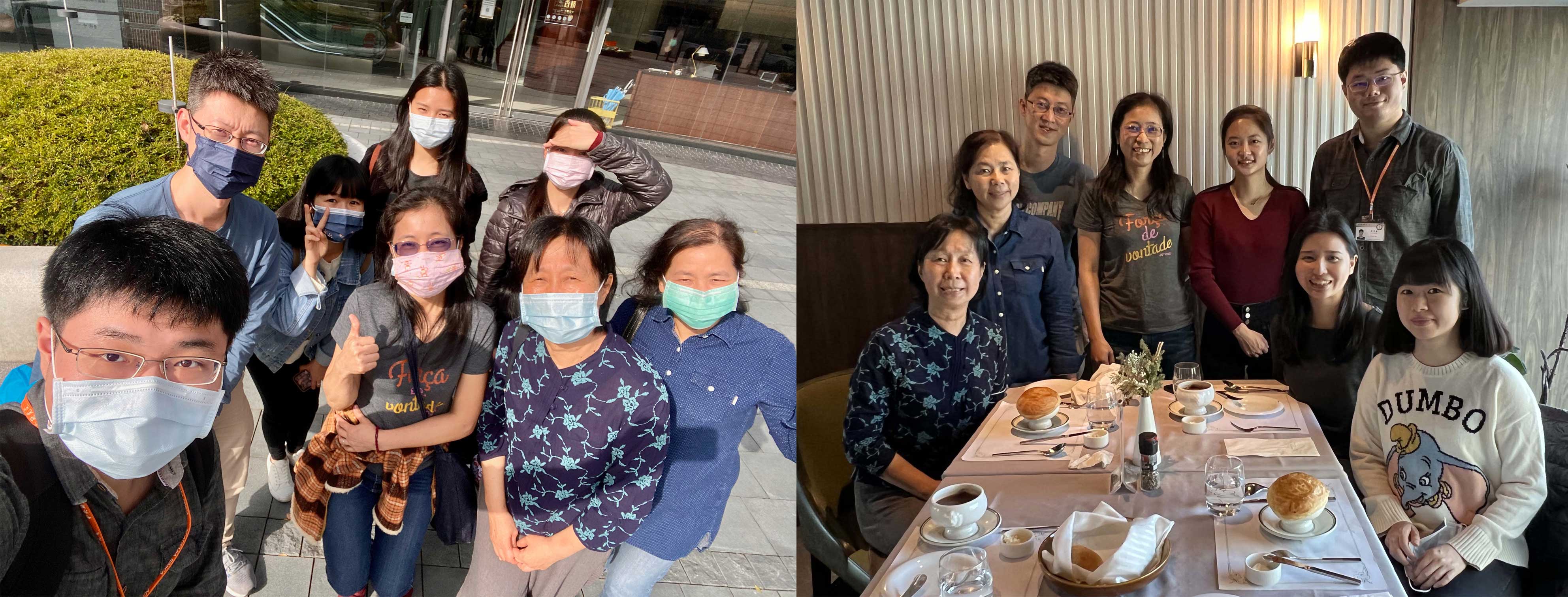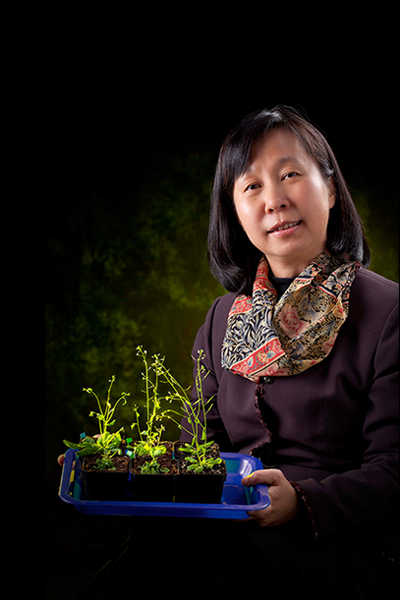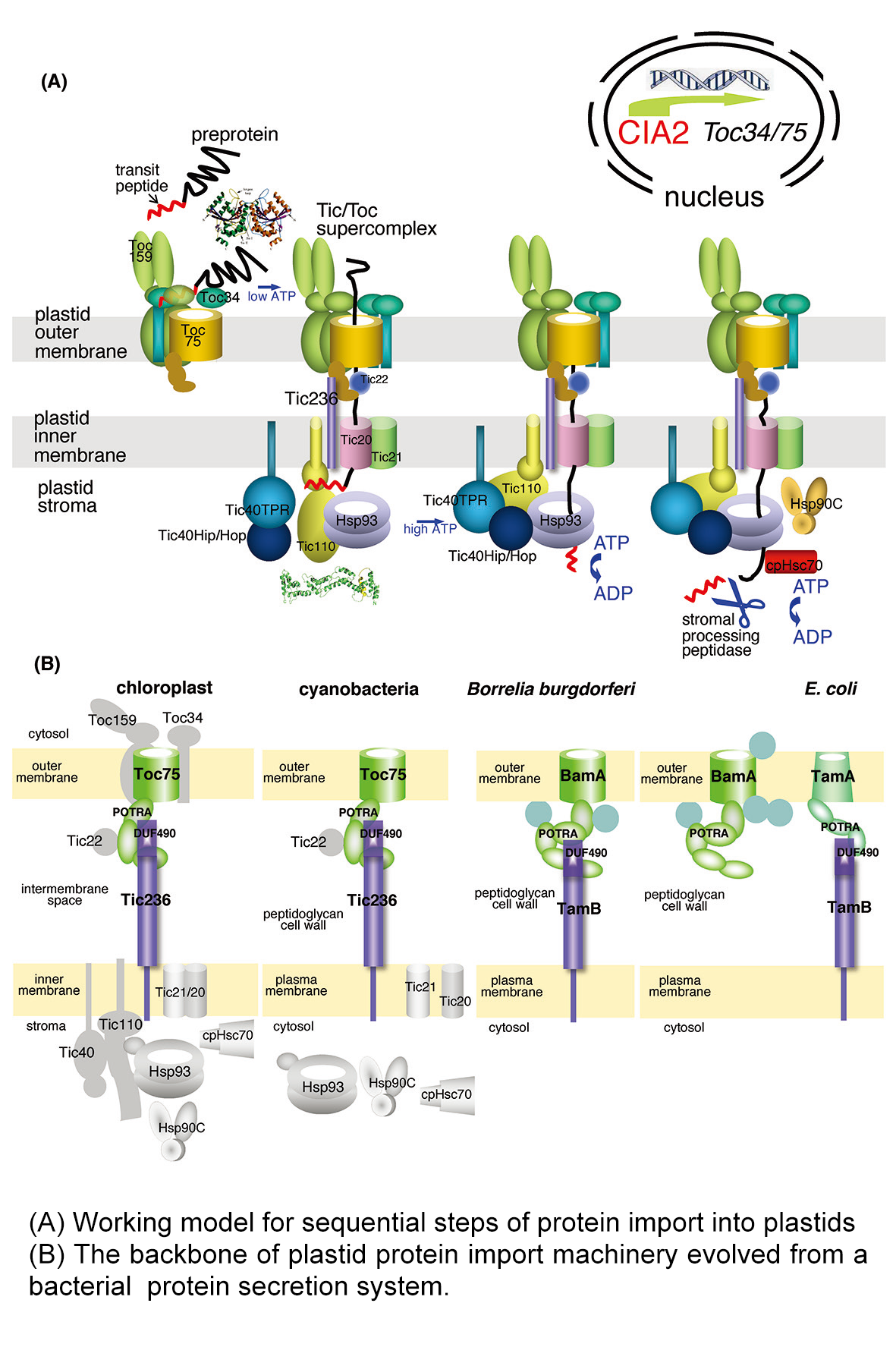Mechanism of Protein Import into Plastids
Plant plastids develop into distinct functional types depending on the tissue they reside. For example, they develop into chloroplasts in leaves for photosynthesis and into leucoplasts in roots for nutrient storage. Most proteins in plastids are encoded by the nuclear genome and post-translationally imported from the cytosol. Our lab is interested in understanding the evolution, regulation and mechanistic steps of the import process. We have identified/characterized a channel component, a co-chaperone and two motor proteins in the translocon complexes. We further found that chloroplast preproteins can be divided into three age-selective groups and have identified essential transit-peptide motifs for targeting older chloroplasts and leucoplasts. Results of our identification and characterization of the bridge protein linking the outer and inner membrane translocons suggest that the backbone of the plastid protein import machinery evolved from a bacterial protein secretion system. Through analyzing the molecular functions and atomic structures of individual translocon components, and the interactions and assembly among components, we aim to reveal the sequential steps of protein import into plastids.
- PDF, 1992-1995, Plant Biology Lab., Salk Institute, USA Plant Biology Div., Noble Foundation, USA
- Ph.D., 1992, Cell & Molec. Biol. Program, U. Wisconsin-Madison, USA
- BS, 1986, Dept. Botany, Natl. Taiwan Univ.
- 2023 Outstanding in Teaching Award, National Taiwan University 台灣大學 教學傑出獎
- 2022 Outstanding Women in Science 台灣傑出女科學家獎
- 2020 American Society of Plant Biologists Enid MacRobbie corresponding membership award 美國植物學家學會終生會員獎
- 2020, 2021, 2022 Excellence in Teaching Award, College of Life Science, National Taiwan University 台灣大學 教學優良獎
- 2019 Academic Award of Ministry of Education 教育部 學術獎
- 2008, 2019 Shu-Chen Grace Chen Distinguished Lectureship 陳淑真研究員學術講座
- 2018 侯金堆傑出榮譽獎
- 2019-2024, 2014-2019, 2009-2014, 2004-2009, 1998-2003 Frontier Science Grant, Ministry of Science and Technology, Taiwan 國科會尖端科技研究計畫
- 1999-2000, 2001-2002, 2005-2007 Research Excellence Award, National Science Council, Taiwan 國科會傑出獎
- 1999 Youth Medal, Chinese Youth Corp. Taiwan 救國團青年奬章
- 1998 Young Investigator Publication Award, Academia Sinica, Taiwan 中研院年輕人員著作奬
- Li, H.-m., Chiu, C.-C. (2010) Protein transport into chloroplasts. Annual Rev Plant Biol. 61:157-180.
- Teng, Y.-S., Chan, P.-T., Li, H.-m. (2012) Differential age-dependent import regulation by signal peptides. PLoS Biology 10: e1001416.
- Lin, Y.-T., Chen, L.-J., Herrfurth, C., Feussner, I., Li, H.-m. (2016) Reduced biosynthesis of digalactosyldiacylglycerol, a major chloroplast membrane lipid, leads to oxylipin overproduction and phloem cap lignification in Arabidopsis. Plant Cell 28: 219-232.
- Chen, Y.-L., Chen, L.-J., Chu, C.-C., Huang, P.-K., Wen, J.-R., Li, H.-m. (2018) TIC236 links the outer and inner membrane translocons of the chloroplast. Nature 564: 125-129.
- Li, H.-m., Schnell, D., Theg, M.S. (2020) Protein import motors in chloroplasts: on the role of chaperones. Plant Cell 32: 536-542.
- Chu, C.-C., Swamy, K., Li, H.-m. (2020) Tissue-specific regulation of plastid protein import via transit-peptide motifs. Plant Cell 32: 1204-12172.
- Yu, C.-W., Lin, Y.-T., Li, H-m (2020) Increased ratio of galactolipids MGDG:DGDG induces jasmonic acid overproduction and changes chloroplast shape. New Phytologist 228: 1327-1335.
- Li, H-m (2021) A CHLORAD way to turn red. Nature Plants 7: 550-551.
- Fang, J., Li, B., Chen, L.-J., Dogra, V., Luo, S., Wu, W., Wang, P., Hwang, I., Li, H.-m.,* and Kim, C.* (2022) TIC236 gain-of-function mutations unveil the link between plastid division and plastid protein import. Proc. Natl. Acad. Sci. 119 (11) e2123353119. doi.org/10.1073/pnas.2123353119.
- Chang, C-Y., Chen, L.-J., and Li, H.-m.* (2023) Chloroplast import motor subunits FtsHi1 and FtsHi2 are located on opposite sides of the inner envelope membrane. Proc. Natl. Acad. Sci. 120 (37) e2307747120 doi.org/10.1073/pnas.2307747120
- Chu, C.-C., Han, C.-Y., and Li, H.-m.* (2025) High-efficiency leucoplast transit peptides for manipulating plastid protein production. Nature Plants. https://doi.org/10.1038/s41477-025-02020-x.


